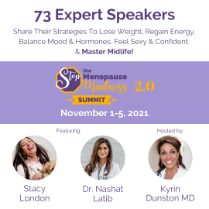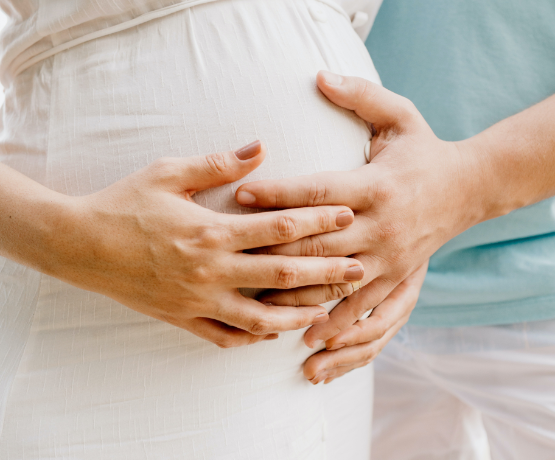While this topic may seem obvious to a woman, working with thousands of patients over the last decade has revealed that many women have never been given a full understanding of their entire menstrual cycle and the ways in which each piece of the puzzle impacts fertility.
The goal of our functional approach to fertility is to nurture your body to its most fertile state prior to conception so you can get pregnant, stay pregnant, and carry a healthy baby to term.
With that in mind, we look at the full month of your menstrual cycle to understand your hormones and what is needed to optimize your fertility.
Doing so will help you understand what is happening at the level of your ovaries, brain, uterus, and the connection between all of these organs – all of which play a vital role in your path to becoming a mother.
Your Cycle Timeline
Your menstrual cycle is actually the full month that it takes your body to cycle through each phase, not simply the period of time that you bleed. Within this month, your body goes through the follicular and luteal phase.
Follicular development is happening inside of your ovaries over the course of your cycle, while the various hormones in your body fluctuate during the different phases of your cycle.
The first day of your cycle through right before you ovulate is considered the follicular phase. After the follicular phase is the ovulatory phase, which is just like it sounds, the time in which you are ovulating..
The luteal phase is the latter half of your cycle post ovulation.
Tracking Your Day One
The very first thing to understand is what day of your cycle is actually considered the beginning of your cycle – day one is the first day of your full bleed.
This is the first day that you need to use protection, like a pad or a tampon or a menstrual cup, based on your preference.
If you are spotting or just seeing redness when you wipe, this is not considered the beginning of your cycle. Technically, if you’re spotting and you haven’t started to have a full bleed it is considered the end of your previous cycle.
If you have prolonged days of spotting, this can provide us essential information to evaluate where in your cycle you may need some additional support to improve fertility outcomes.
Your Hormones and Your Cycle
Most women understand that hormonal health is essential to fertility. And as mentioned above, your hormones will fluctuate throughout your cycle. Let’s dive into understanding what is happening – and when – throughout this full month.
It Starts in the Brain
Follicular stimulating hormone, also known as FSH, is released from the brain and talks to your ovaries, signaling the ovaries to start developing follicles.
Your FSH will slowly increase throughout the course of the follicular phase of your cycle, ramping up around day seven or eight, and then beginning to decline again.
So…at the beginning of your cycle, there is a very tiny follicle which slowly starts to grow, secondary to the signal that your follicle stimulating hormone is sending to the ovary.
You may have anywhere between three to 20 follicles growing in any particular cycle. How many follicles grow is based on the reserve that you have in your ovaries, as well as your age. Nutrient status, your toxic burden, and blood flow also influence follicular development.
The functional medicine approach to fertility includes looking into all of these factors so that from the very beginning of your cycle, you have the best chance for a positive outcome and high quality eggs!
Estrogen
As your follicles develop, they start releasing estrogen or estradiol. Estradiol rises slowly from day nine of your cycle and peaks anywhere between cycle days 12 to 15.
As more and more estrogen is released from the follicle, it starts to build up in your body and peaks. This then signals the brain to release the next hormone.
Releasing the Egg
Once estrogen has peaked, your body releases luteinizing hormone or LH. LH has a very quick peak and fall, essentially only hanging out for about one to three days maximum.
The sole purpose of luteinizing hormone is to stimulate the release of the follicle from the ovary – and remember, the egg is inside of your follicle. Your body will choose the best one and, in the case of twins, may release more than one.
The follicle gets released on approximately day 14 of your cycle. Once the best follicle has been released, the rest of the follicles will essentially dissolve away.
What is left behind after the egg is released is the shell that was protecting the egg. This is now called the corpus luteum.
Progesterone
The corpus luteum is critical, as it has a role in progesterone production and it is responsible for the release of progesterone in the latter half of your cycle.
The health of the corpus luteum is reflective of the health of the egg that was just released.
During the luteal phase, the corpus luteum is what actually sustains progesterone production in your body … and progesterone is exactly what it sounds like – pro gestation.
This is the hormone that is going to promote gestation and implantation.
If you do conceive, this hormone is crucial to sustain a healthy pregnancy at least through the end of the first trimester. At the end of the first trimester, your baby is going to take over the production of progesterone.
Because having an optimal progesterone level is so critical to success in pregnancy, many practitioners focus on giving patients this hormone during the initial conception period. However, our focus with functional medicine is to support your body’s inherent production of its own progesterone.
Every part of your cycle plays a role in fertility. We work on all of the imbalances that contribute to any fertility challenges you may be experiencing on a micro and macro level. This gives your body the best chance of healthy, long term outcomes.
Birth Control and Progesterone
It’s important to note that women who have been on hormonal birth control sometimes have a harder time producing progesterone and sustaining progesterone during the latter part of their cycles.
Sometimes the body can’t remember how to produce progesterone adequately because birth control essentially dampens the signal and your body may have gotten used to not having to produce progesterone in the first place.
This is especially apparent in women who have been on birth control for a prolonged period of time, but you can retrain your body.
We work with women to retrain the ovaries to sustain a healthy corpus luteum and the related healthy level of progesterone for the duration of time needed.
Body Temperature Fluctuations
One way of tracking your cycle is closely monitoring your basal body temperature.
Estrogen is generally cooling and progesterone is generally warming, which means in the follicular phase, you will generally have a slightly lower temperature curve than in the latter half of your cycle. Because of this, your basal body temperature will tend to rise after ovulation. It will stay elevated if you’re having good, healthy, vibrant levels of progesterone production by the corpus luteum.
Your Uterus and Progesterone
To complete the overview of your menstrual cycle, it’s necessary to understand what’s happening within your uterus during this time.
Throughout the follicular and luteal phases, your endometrium lining is thickening from the combination of estrogen and progesterone. The womb line is thickening in preparation to receive a fertilized egg.
Menstruation is the shedding of this endometrium lining.
Progesterone heavily influences the development of the lining of your uterus and directly influences the possibility of healthy implantation after conception.
Implantation is when the conceived embryo sticks to the side of your uterus lining and starts to develop into a super baby.
Next Steps
As you can see, there are a lot of pieces to the puzzle when it comes to your body, your cycle, and healthy implantation.
We want you to have the absolute BEST chance of getting pregnant, having optimal implantation, AND carrying a healthy baby to term, which is why we help you understand your body every step of the way.
If you’d like to work with us directly, we are currently accepting just a few more people into our 12 week Fertility Kickstart program. Click here to grab one of the last few application spots!








